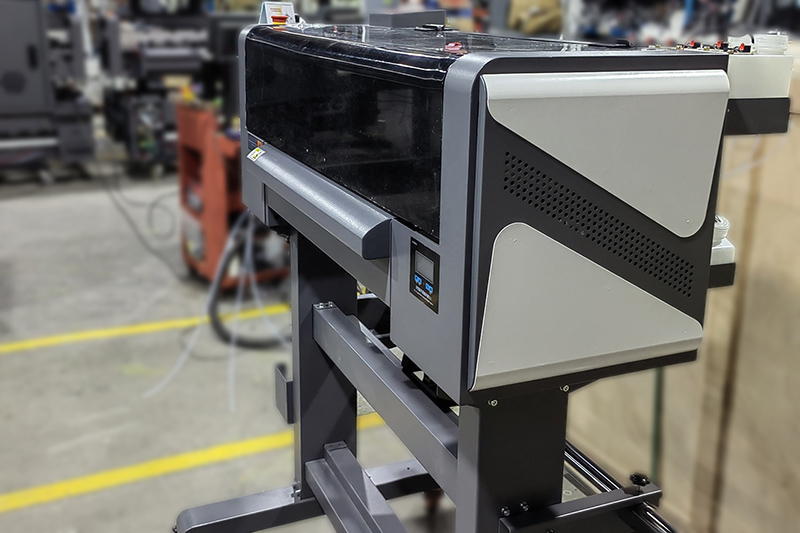DTF printing has revolutionized the world of custom apparel, offering a versatile and efficient solution for transferring designs onto a wide range of fabrics. The KTM-A16 DTF printer emerges as a powerful tool within this landscape, boasting advanced features and impressive capabilities for both novice and seasoned users. This guide delves into the intricacies of the KTM-A16, providing valuable insights and practical tips to help you achieve outstanding results with every print.

The KTM-A16 is a robust DTF printer designed to deliver high-resolution prints with vibrant colors and exceptional detail. Equipped with dual XP600 printheads and boasting a maximum printing width of 450mm (A2), the KTM-A16 efficiently handles both small intricate designs and larger-scale projects. With a print speed of up to 4.5㎡/h (6-pass) and 3.5㎡/h (8-pass), this DTF printer effortlessly keeps up with demanding production needs.
Optimizing Your DTF Printing Workflow
1. Pre-Printing Preparation:
Material Selection: The KTM-A16 DTF printer is compatible with a variety of fabrics, including cotton, polyester, blends, and more. Ensure your chosen fabric is pre-washed and free of any wrinkles or debris.
Design Optimization: Utilize high-resolution images (at least 300 DPI) and vibrant color profiles within your chosen design software to ensure optimal print quality.
Software Setup: Familiarize yourself with the Maitop 6.1 software, adjusting print settings like ink density, print passes, and drying temperatures according to your chosen fabric and design.
2. Printing Process:
Precise Loading: Carefully load the DTF film onto the printer's roll feeder, ensuring it is straight and securely in place to prevent misalignment during printing.
Ink Management: The KTM-A16 utilizes CMYK, white, and fluorescent inks. Monitor ink levels regularly and perform routine printhead cleaning to maintain optimal performance and prevent clogging.
Temperature Control: Adjust the pre-heater, printing bed heater, and rear heater temperatures according to the manufacturer's recommendations and your chosen DTF film type. This ensures proper ink adhesion and curing.
3. Post-Printing Essentials:
Powder Application: Evenly apply DTF powder to the printed design while the ink is still wet. This special powder adheres to the ink, creating a durable and flexible transfer.
Curing Process: Utilize a heat press or curing oven to heat-set the powder and ink, ensuring a strong bond between the design and the DTF film.
Transfer Application: Carefully peel the backing from the cured DTF film and position the design onto your chosen fabric. Apply even heat and pressure using a heat press to transfer the design.
Finishing Touches: Allow the transferred design to cool completely before peeling off the DTF film. This ensures a smooth and long-lasting transfer.
Troubleshooting and Maintenance
Regularly clean the printheads and wiper to prevent ink buildup and ensure consistent print quality.
Use high-quality DTF inks and films specifically designed for the KTM-A16 to achieve optimal results and prevent printer damage.
Consult the user manual for detailed troubleshooting tips or contact Kenteer customer support for technical assistance.
The KTM-A16 DTF Printer offers a gateway to unlocking vibrant and durable designs on a range of fabrics. By understanding the nuances of the DTF printing process and adhering to best practices, you can leverage the full potential of this powerful machine to elevate your creative projects and business endeavors. With its user-friendly interface and impressive capabilities, the KTM-A16 empowers you to transform your creative visions into tangible, high-quality products.
